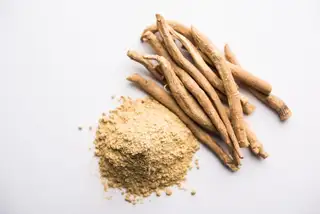
Herbal Foods, New Trend in Healthy Eating
In the ever-evolving landscape of nutrition and wellness, a new trend has emerged that is captivating the attention of health-conscious individuals worldwide – herbal foods. These nature-based offerings are not only tantalizing our taste buds but also promising a plethora of health benefits that align perfectly with the modern pursuit of a balanced and nourishing diet. Let's embark on an in-depth exploration of this exciting development and uncover why herbal foods have become the latest sensation in the realm of healthy eating.
The concept of incorporating herbs into our diet is not entirely novel. For centuries, various cultures have utilized herbs in their culinary practices for both flavor and medicinal purposes. However, the recent resurgence of herbal foods can be attributed to a growing awareness of the profound impact that natural ingredients can have on our overall well-being.
One of the key drivers behind the popularity of herbal foods is their rich nutritional profile. Herbs are often packed with essential vitamins, minerals, antioxidants, and phytochemicals that play crucial roles in maintaining optimal health. Take basil, for instance. It is a rich source of vitamin K, which is essential for blood clotting and bone health. Oregano, on the other hand, is laden with antioxidants that help combat oxidative stress and reduce the risk of chronic diseases.
Herbal foods also offer a diverse range of flavors and textures, adding depth and complexity to our culinary experiences. The delicate fragrance of lavender in a dessert or the bold kick of thyme in a savory dish can transform an ordinary meal into a culinary masterpiece. This sensory appeal not only makes healthy eating more enjoyable but also encourages us to explore new and creative ways of incorporating herbs into our daily diet.
In addition to their nutritional and flavor-enhancing properties, herbal foods are renowned for their potential therapeutic benefits. Many herbs have been studied for their ability to support various bodily functions and address specific health concerns. Ginger, for example, is well-known for its anti-inflammatory and digestive-aiding properties. Consuming ginger in various forms, such as fresh ginger tea or as an ingredient in stir-fries, can help alleviate nausea, reduce inflammation, and improve digestion.
Turmeric, with its active compound curcumin, has gained significant attention for its potent anti-inflammatory and antioxidant effects. Incorporating turmeric into curries, smoothies, or golden milk can potentially offer protection against chronic diseases like heart disease, arthritis, and certain cancers.
Another herb that has made waves in the health food scene is mint. Mint is not only refreshing but also known to aid in digestion, relieve bloating, and soothe an upset stomach. Its cooling properties make it a popular choice in summer beverages and salads.
The rise of herbal foods also coincides with the increasing demand for sustainable and environmentally friendly food choices. Many herbs are relatively easy to grow at home or in small-scale gardens, reducing the carbon footprint associated with food production and transportation. This local and sustainable aspect of herbal foods appeals to those who are conscious of their ecological impact and strive to make choices that support a greener planet.
Moreover, the accessibility of herbal foods has contributed to their widespread adoption. From farmers' markets and specialty stores to mainstream grocery aisles, a wide array of fresh herbs, dried herb blends, and herbal-infused products are now readily available. This accessibility has made it easier for consumers to experiment with different herbs and incorporate them into their everyday meals.
The integration of herbal foods into our diet can take various forms. It can be as simple as adding a handful of fresh parsley or cilantro to a salad, using herbal teas as a hydrating and beneficial alternative to sugary beverages, or incorporating herbal spices and seasonings into homemade marinades and sauces.
Let's take a look at some delicious and nutritious recipes that showcase the use of herbal foods:
Herbal Quinoa Salad:
- Cooked quinoa
- Fresh herbs like basil, mint, and parsley
- Cherry tomatoes, cucumber, and feta cheese
- Lemon juice, olive oil, salt, and pepper
Toss the ingredients together for a refreshing and protein-packed salad.
Herbal Chicken Soup:
- Chicken broth
- Chicken breast, cooked and shredded
- Carrots, celery, and onions
- Thyme, rosemary, and sage
- Salt and pepper to taste
This comforting soup is not only delicious but also nourishing.
Lemon and Lavender Cookies:
- Flour, sugar, butter
- Lemon zest, lavender buds
- Eggs and vanilla extract
The combination of lemon and lavender creates a unique and delightful treat.
As with any dietary trend, it's important to approach the consumption of herbal foods with knowledge and moderation. While most herbs are safe for consumption, some may interact with certain medications or have contraindications for specific individuals. It's always advisable to consult with a healthcare provider or a qualified nutritionist if you have any underlying health conditions or concerns.
In conclusion, the emergence of herbal foods as a new trend in healthy eating represents a harmonious blend of flavor, nutrition, and therapeutic potential. By embracing this trend and incorporating a diverse range of herbs into our diet, we can embark on a flavorful journey towards better health and well-being. As the popularity of herbal foods continues to soar, it's an exciting time to explore the vast possibilities that these nature's gifts have to offer.
So, whether you're a seasoned chef or a novice in the kitchen, embrace the world of herbal foods and savor the goodness they bring to your plate and your health. The future of healthy eating looks green, fragrant, and incredibly delicious.





